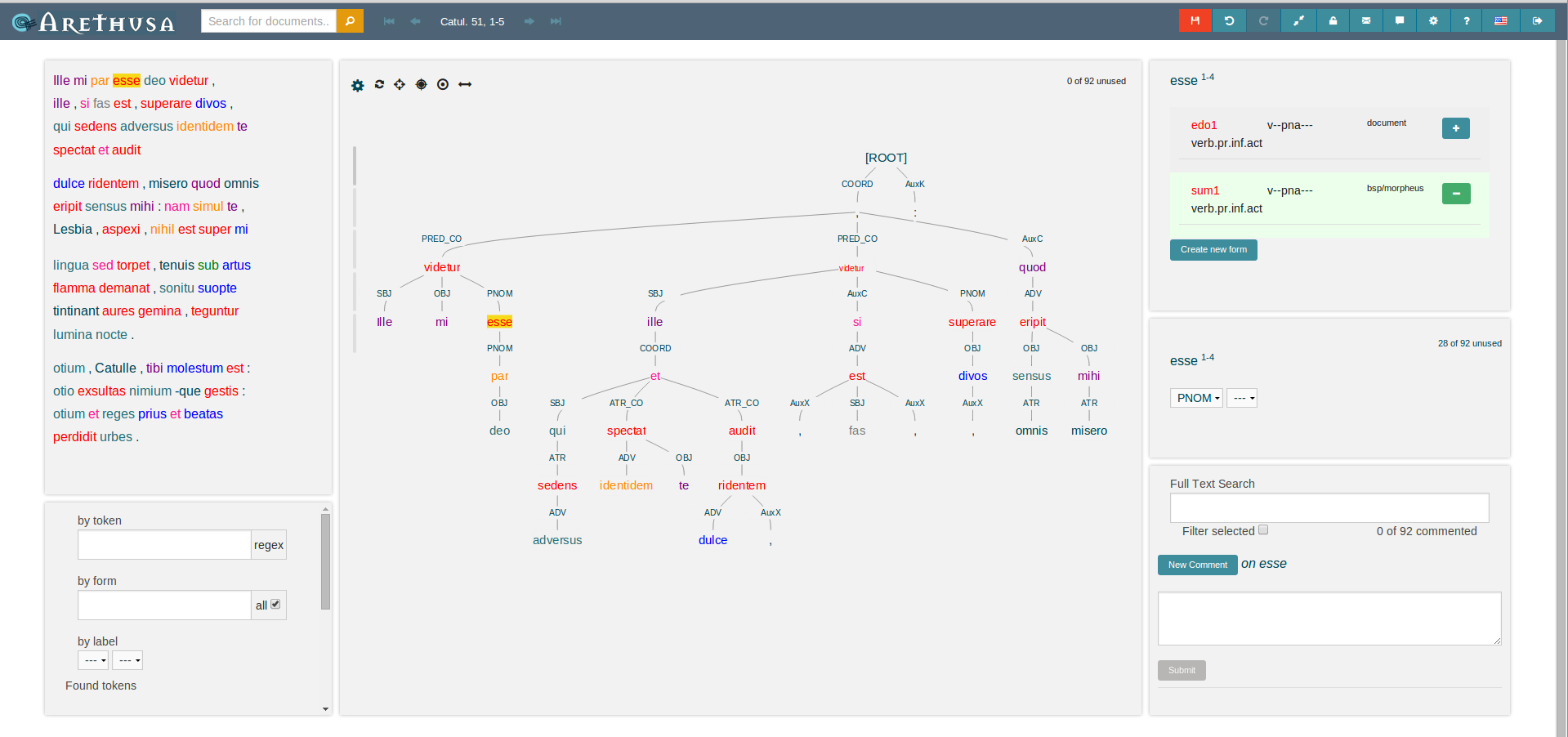Announcing the Arethusa Annotation Framework
Developers Gernot Höflechner, Robert Lichtensteiner and Christof Sirk, in collaboration with the Perseus Digital Library at Tufts (via the Libraries and the Transformation of the Humanities and Perseids projects) and the University of Leipzig’s Open Philology Project, have released Arethusa, a framework for linguistic annotation and curation. Arethusa was inspired by and extends the goals of the Alpheios Project, to provide a highly configurable, language-independent, extensible infrastructure for close-reading, annotation, curation and exploration of open-access digitized texts. While the initial release highlights support for morpho-syntactic annotation, Arethusa is designed to allow users to switch seamlessly between a variety of annotation and close-reading activities, facilitating the creation of sharable, reusable linguistic data in collaborative research and pedagogical environments.
Arethusa is built on the angular.js javascript web application framework and provides a back-end independent infrastructure for accessing texts, annotations and linguistic services from a variety of sources. Extensibility is a guiding design goal — Arethusa includes tools for automatic generation of skeleton code for new features as plugins; detailed development guides are also currently in progress. We hope others will be able to reuse and build upon the platform to add support for other annotation types, languages and back-end repositories and workflow engines.
Arethusa is already deployed as a component of the Perseids platform, where it provides an annotation interface for morpho-syntactic analyses and will soon also act as a broker between the Perseids back-end (the Son of SUDA Online application) and various other front-end annotating and editing activities, including translation alignments, entity identification and text editing.
Screencasts are available that show how the Arethusa application can be used for syntactic diagram (treebank) and morphological analysis annotations on Perseids. Additional demos and slides will be made available soon which highlight additional features along with the architecture and design.
This project has been made possible in part by the Institute of Museum and Library Services (Award LG0611032611), the Andrew W. Mellon Foundation and the European Social Fund. We also are indebted to Robert Gorman and Vanessa Gorman of the University of Nebrask and Giuseppe G. A. Celano of the University of Leipzig for their invaluable contributions to the design and testing of the platform.

















